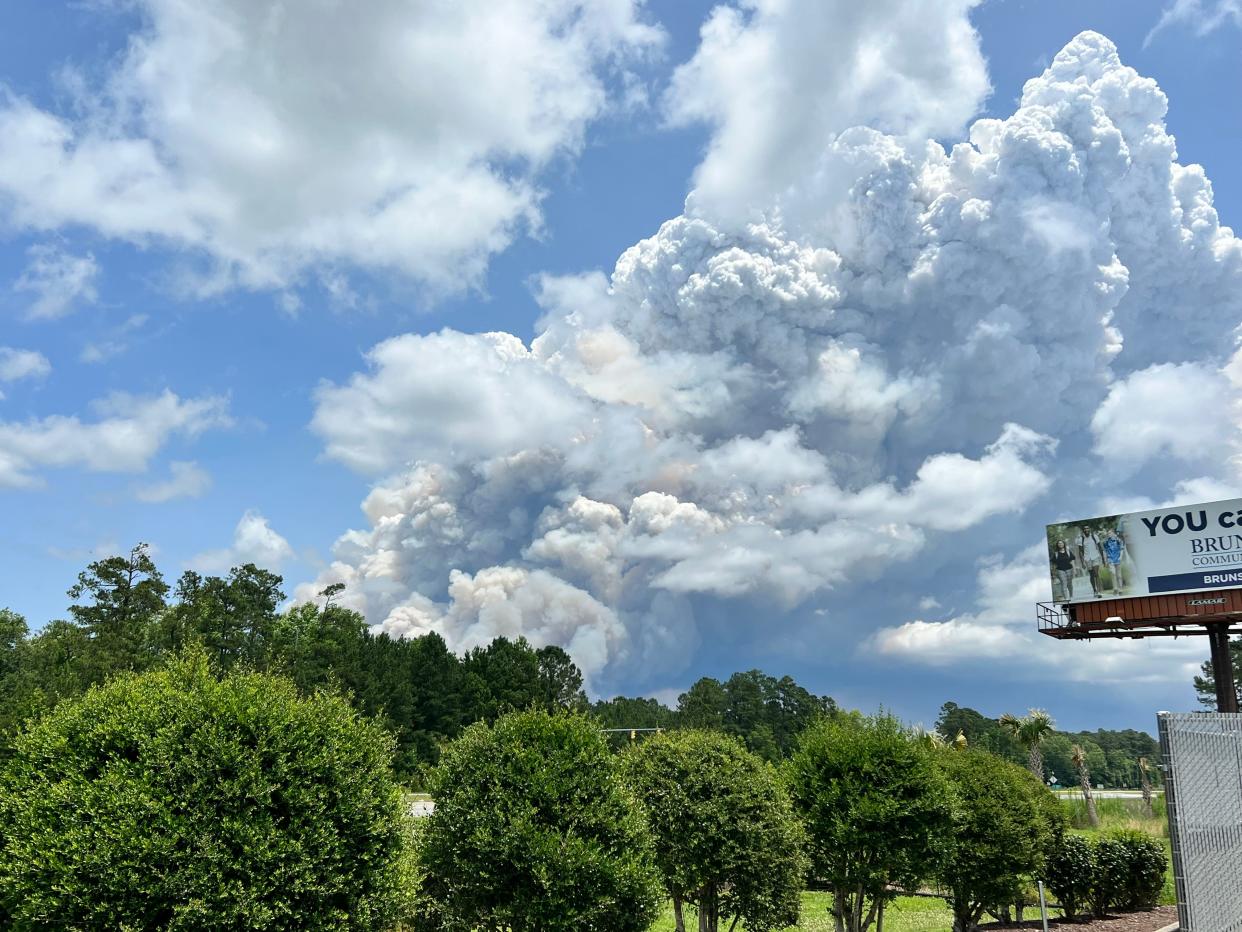Weeks after going from controlled to wild, here's where the Brunswick wildfire stands

A Brunswick County wildfire continues to smolder two weeks after it started.
While the fire is being investigated, Philip Jackson, spokesman for the N.C. Forest Service, said preliminary reports show the fire began as a prescribed burn conducted by the North Carolina Wildlife Resources Commission on June 13. The fire started around Pulp Road in the Green Swamp Nature Preserve and grew to encompass 15,642 acres.
As a result, the N.C. Forest Service’s Red Incident Command Team took over operations and added additional personnel to conduct firing operations to burn grasses and underbrush to keep the fire contained. No injuries have been reported, and no structures have been threatened since the fire began.
As of June 28, the fire’s containment level was 90 percent. Jackson explained contained doesn’t necessarily mean extinguished.
“Containment means that we can turn our back on it without it escaping,” he said.
The blaze remains under investigation, and at this point, Jackson could not say whether the agency was considering filing charges in relation to the incident.
“All of that would be dependent on the final investigation report,” he said.
On June 28, a team of 17 personnel remained on the scene: Nine N.C. Forest Service employees, along with personnel from The Nature Conservancy, the North Carolina Wildlife Resources Commission, and North Carolina Emergency Management.
Jackson said the area received ¾-inch of rain overnight Monday, which allowed crews to conduct drone and infrared imaging overnight on Tuesday, June 27, to gauge containment, resulting in the increased percentage. He added additional infrared imaging flights were planned for Wednesday, June 28, which could result in another increase to the containment percentage.
So far, officials say there has not been a significant impact to the wildlife population in the Green Swamp Nature Preserve.
Debbie Crane, spokeswoman for the North Carolina Chapter of The Nature Conservancy, said staff has visited the Preserve and has not observed any dead wildlife.
“You have to remember that the Preserve, like most of Southeastern North Carolina, is fire-adapted,” Crane said in an email. “Animals are pretty smart when it comes to fire. The animals in this region have lived and thrived through fire for thousands of years.”
Crane said The Nature Conservancy routinely conducts controlled burns at the Green Swamp Nature Preserve, but she noted it was the North Carolina Wildlife Resources Commission − not the conservancy − that conducted the prescribed burn that started the wildfire.
“In the places where we had burned, we had removed fuel, so those areas didn’t burn during the recent fire and provided safe havens for wildlife,” Crane said. “Also, there is lots of surrounding area for wildlife to move into during a fire. Our staff have reported seeing lots of live wildlife after the fire – including several bears, deer, squirrel, skinks and a host of birds.”
The Green Swamp Nature Preserve is also known for being home to one of the largest populations of Venus' flytraps, as well as a habitat for carnivorous Pitcher Plants, but both can be found in other areas throughout the region.
“We actually own quite a bit of land in the region, that unlike the preserve, is not open to the public,” Crane said. “There are lots of flytraps on other land that we own.”
She noted there are also “healthy and large populations” of Venus' flytraps at Holly Shelter Game Lands, Camp LeJeune, Military Ocean Terminal-Sunny Point, Fort Liberty, and “a host of other spots.”
Crane said Venus' flytraps are actually “fire-dependent” because they need full sun to grow, and fire removes shrubs and other vegetation that could block the sunlight. She added that most of the plants in Green Swamp thrive in similar conditions, and some, like Wiregrass, actually need fire in order to reproduce.
“Our staff have already seen wiregrass in the heavily burned areas of the Preserve that is beginning to green up already,” Crane said.
Crane said The Nature Conservancy is planning events at the Green Swamp Nature Preserve in the spring of 2024 so people can see “the wonders that fire has done for the plants in the preserve.”
“We are confident that it will be an awesome place to see next spring,” she said.
STAY CONNECTED: Keep up with the area’s latest Brunswick County news by signing up for the Brunswick Today newsletter and following us on Facebook and Instagram.
This article originally appeared on Wilmington StarNews: Brunswick County wildfire now 90 percent contained and plants thriving

